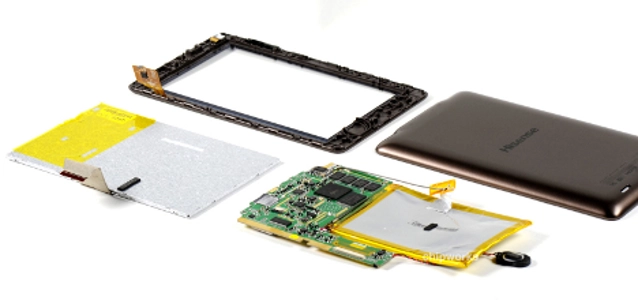
© Chipworks
General |
Hisense has recently released a new USD 99 tablet to the US. Chipwork's experts do not see the gadget topple over the competition. At least not as a stand-alone. "But when coupled with the Hisense Sero Pro (at USD 149), it certainly may herald maturity in the tablet market as we know it", is the verdict. Some specs for the USD 99 version:
Inside the Hisense Sero 7
An electronic consumer gadget that costs less than USD 50 to build? Impossible? Nope.
Hisense has recently released a new USD 99 tablet to the US. Chipwork's experts do not see the gadget topple over the competition. At least not as a stand-alone. "But when coupled with the Hisense Sero Pro (at USD 149), it certainly may herald maturity in the tablet market as we know it", is the verdict. Some specs for the USD 99 version:
- Android 4.1 (good enough)
- 1.6 GHz dual core ARM A9 (good enough)
- 1 Gb RAM (good enough)
- 1024 x 600 capacitive screen (good enough)
- Front only 0.3 MP camera (bad)
- 3400 mAh battery (bad)
- 4 Gb flash (bad) but . . .
- . . . MicroSD slot (good)
- Rockchip RK3066 dual ARM Core V9 with quad core Mali-400 graphics
- 4 X Hynix H5TQ2G83EFR-PBC 256 MB DRAM
- Hynix H27UUBG8TBTR-BG 4 Gb NAND flash
- Texas Instruments TPS659102 integrated power management IC w/4 DC/DCs, 8 LDOs, and RTC
- Freescale MMA7760FC accelerometer
- Realtek ALC5631 Audio codec
- Goodix GT811 touch screen controller
- Ralink RT5370N Wi-Fi SoC
- Image sensor: Chinese company Galaxycore, with die markings GC0308, wins here.

